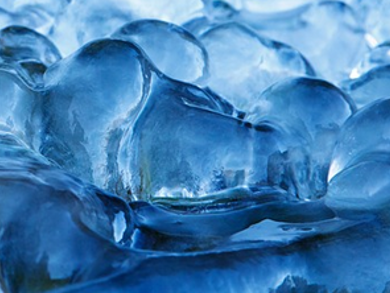In 1842, the British physicist Michael Faraday observed that ice is always wet and forms a thin layer of liquid water. But he could not explain the phenomenon. Today, it is known that not only water ice but also other crystals (metals, semiconductors, ceramic materials, frozen noble gases, frozen organic systems) form such a quasi-liquid layer (QLL). According to the theory, this melt layer is formed because the liquid lowers the free surface energy between the solid and gaseous phase – a kind of saturation equilibrium is formed.
Ken-ichiro Murata, University of Hokkaido, Japan, and colleagues have determined with a combination of laser confocal microscopy and interference microscopy whether this is true. In a cooled sample chamber, they observed the surface of water ice both in water vapor of saturated air, at equilibrium, and in dry air.
It was found that, contrary to the assumption, the QLL does not uniformly and completely cover the ice surface. Instead, depending on the conditions, roundish droplets, flat disc-shaped wet zones, or a mixture of both was formed on the ice. According to the theory, the wet layer should form when the concentration of the water molecules in the air and in the ice crystal is in equilibrium. But in contrary, the researchers observed the QLLs in air saturated with water, in very dry air, but not at equilibrium.
Based on these findings, the researchers have developed a physical model that describes the laws and the behavior of the ice surface under different conditions. According to the researchers, the QLLs are not a vapor-pressure-ice equilibrium, but are metastable transient states which form during sublimation and the freezing of steam.
- Thermodynamic origin of surface melting on ice crystals,
Ken-ichiro Murataa, Harutoshi Asakawab, Ken Nagashimaa, Yoshinori Furukawaa, Gen Sazakia,
Proc. Nat. Acad. Sci. 2016.
DOI: 10.1073/pnas.1608888113




